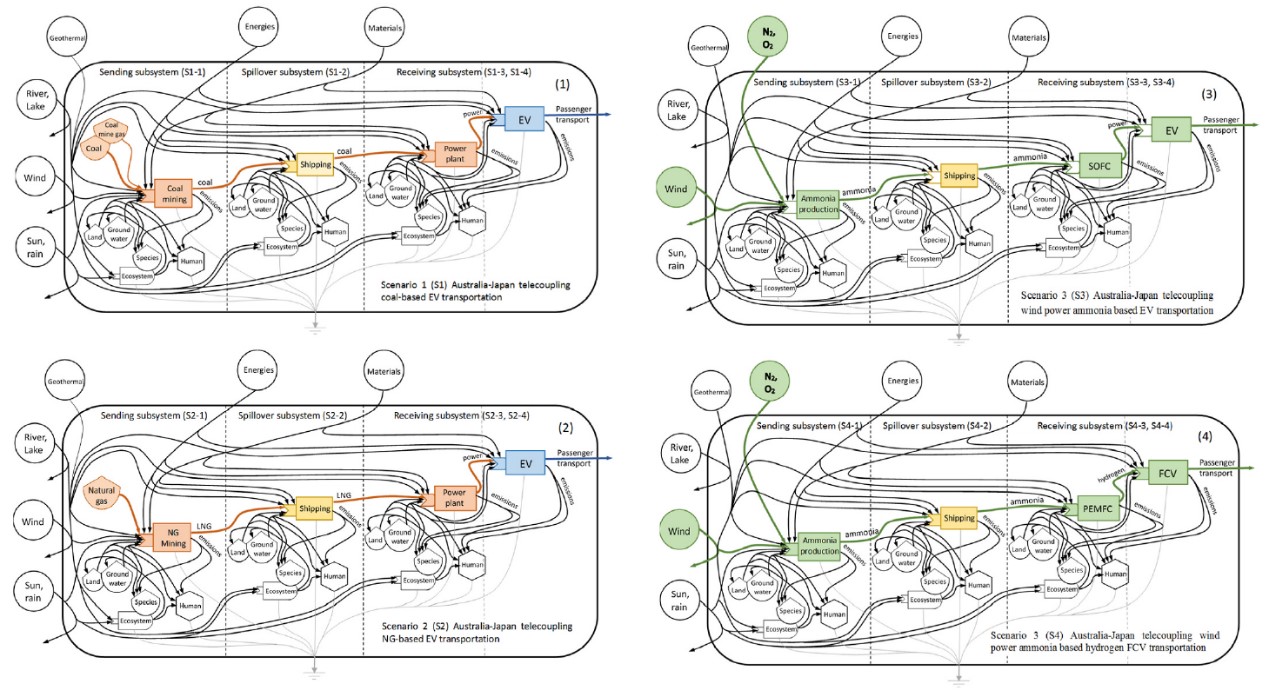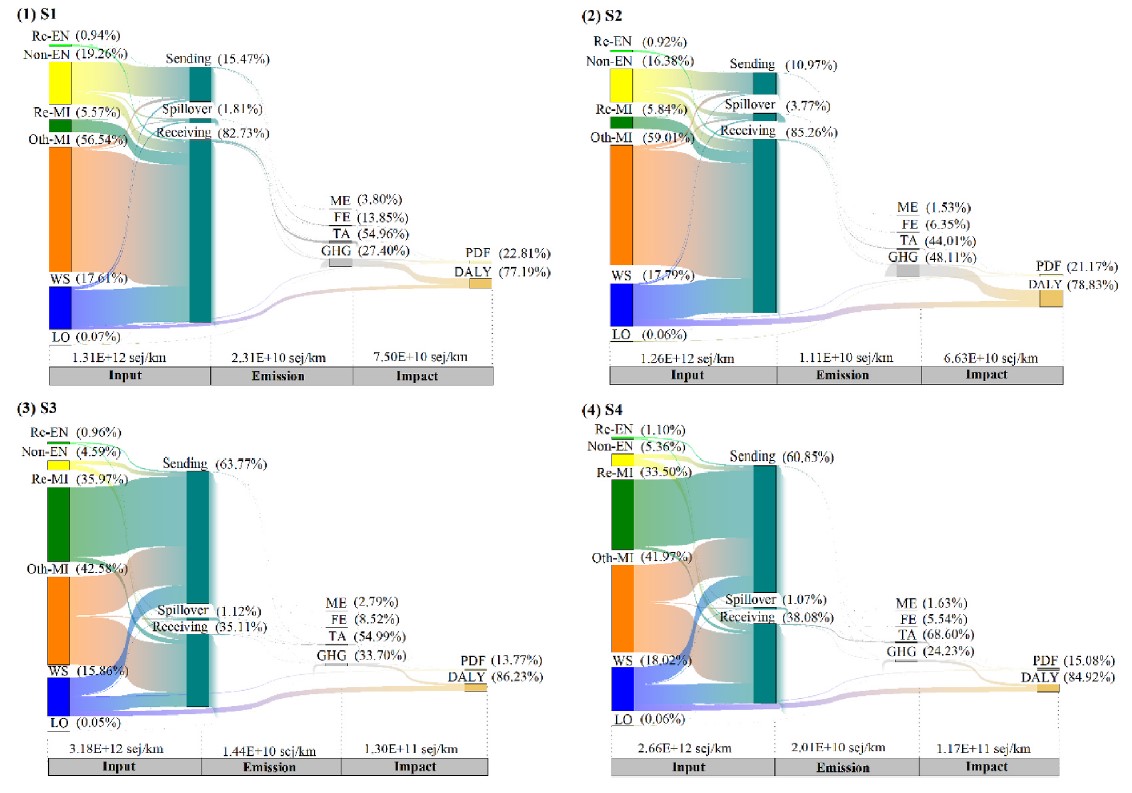Fig. 2 Structure of emergy-based inputs, emissions, and biotic impacts of the four telecoupling scenarios.
Because ammonia is a renewable energy medium appropriate for distant trading, many countries/regions and companies have already formulated ambitious strategies in developing green ammonia for energy transitions. However, the associated social, economic and environmental impacts of such energy transitions are still a mystery, due to the lack of integrated evaluation methods.
To fill this gap, an life cycle assessment and emergy evaluation (LCA-EME) method was brought up, and applied to quantify the resource depletion, production efficiency, emissions, biotic impacts, and sustainability of the Australia-Japan telecoupling of wind power-based ammonia electric vehicles (EV) and hydrogen fuel cell vehicles (FCV) used for passenger transportation. The results revealed that these energy transitions from fossil fuels (coal and natural gas) to green ammonia can reduce nonrenewable energy consumption by >29.64% and Greenhouse Gas (GHG) emissions by >10.00%, while increasing the emergy demand for resources by >2.03 times and the biotic endpoint impacts by >1.56 times, which all mainly occurred in the sending subsystem of the telecoupling interaction. How to internalize the spatial ‘external’ resource stress and the biotic impacts, increase the utilization efficiency and the recycling rate of minerals and fresh water, and decrease the endpoint impacts need to be fully considered to guarantee the sustainability of these telecoupled energy transitions. The integrated life cycle assessment and emergy evaluation (LCA-EME) is a valuable tool that is under-development to better handle the complicated multi-nodal nexus problems of telecoupling activities.
This work has been published in Renewable & Sustainable Energy Review (RSER, IF5year=17.551). Prof. Hongfang Lu is the first author, and Prof. Hai Ren is the corresponding author.
For further reading, please refer to: https://doi.org/10.1016/j.rser.2022.11288

Fig. 1 Conceptual Energy Systems Language diagram of the four telecoupling scenarios

Fig. 2 Structure of emergy-based inputs, emissions, and biotic impacts of the four telecoupling scenarios.
File Download: